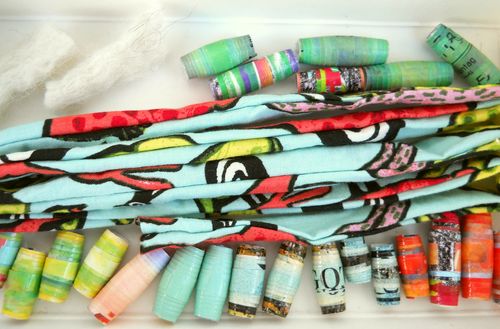Have timed some of the stages in necklace-making (in case I decide to sell them). Here are the numbers:
Paper Beads
Mark and cut paper = 20 sec. per bead
Roll and glue bead = 2 min. per bead for thick, glossy paper (might be less if paper were "conditioned")
Varnish bead = 20 sec. per bead
Thus, one could make about 20 beads per hour or better. Current necklaces are using 12 beads each.
Fabric and wool
Roll wool snakes for filling fabric tube = 5 min. per necklace
Cut, sew, and turn a fabric tube = 5 min. per necklace
Assemble and finish a 32" necklace = 25 min. per necklace
Thus, one could expect one necklace to involve roughly one hour's labor.
 |
| I may do a necklace using beads from only one sheet of paper |
 |
| Beads from many different papers |





















